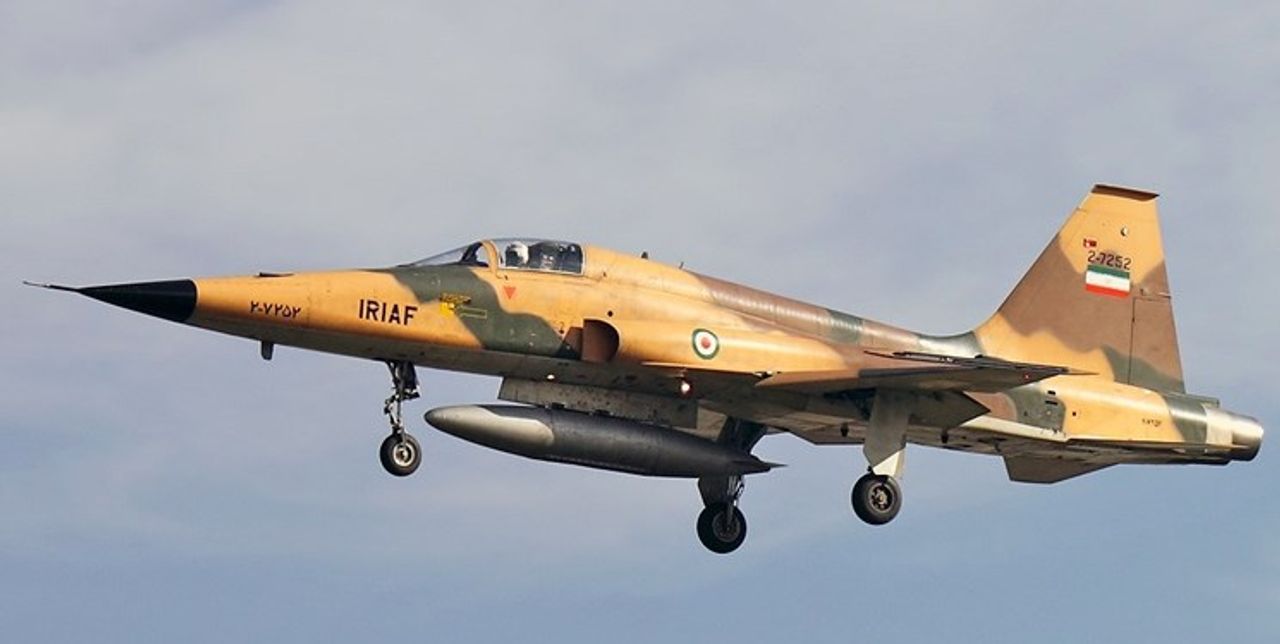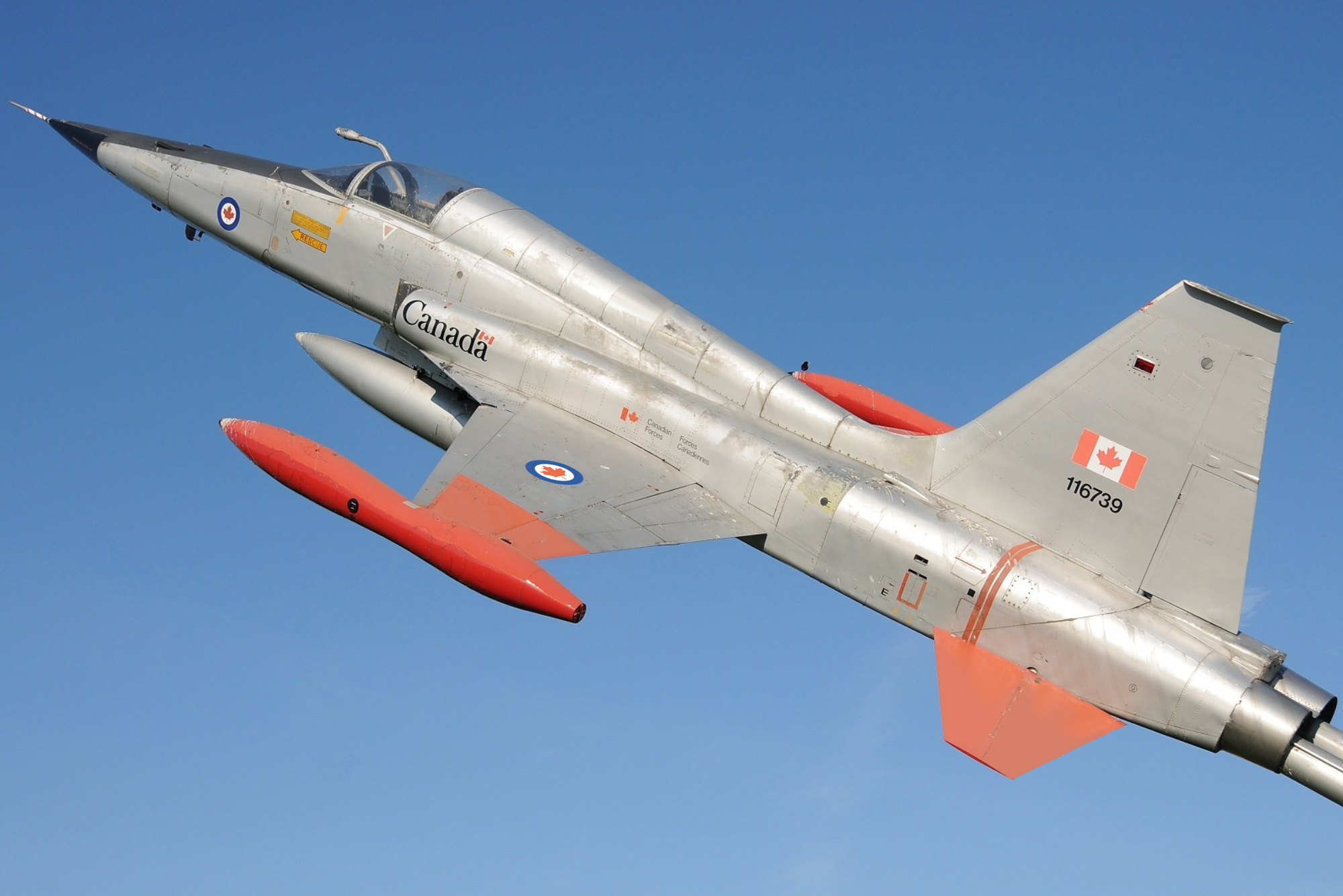F5 Jet Fighter - The American-designed Northrop F-5 was first developed in the late 1950s or early 1960s. It was originally intended to be a highly aerodynamic fighter with good handling characteristics, including high thrust and supersonic flight, as well as ease of maintenance.
Before the Iranian Revolution, Iran received extensive military assistance from the United States - the Imperial Iranian Air Force was no exception, receiving hundreds of F-5s in several generations. Iran has also acquired a number of advanced fighter jets from the US and other countries, resulting in the sale of their F-5s, although many are kept for training purposes or as attack aircraft pilots.
F5 Jet Fighter

In the United States, the F-5 platform primarily serves as an attack aircraft for both the US Navy and the US Navy.
Northrop F 5 Tiger Ii Early Series By Bagera3005 On Deviantart
The F-5 has twin engines and wings. . . It's easy and perfect for reservers. That tool, the Tiger [F-5 variant] can pose a valid threat to Super Hornets and F-35s, especially in a training environment.
In or around 1997, the Azarakhsh Lightning fighter jet was unveiled by the Iranian Aircraft Corporation (abbreviated as HESA). HESA claims that the fighter jets are completely domestically produced and their manufacturing industry is ready for mass production of the fighter. Apparently five or six airframes have been built since then.
Although HESA claims that the Azarakhsh design is entirely home-grown, it is evident that the F-5 design, in fact, may have improved thrusters and a stronger fuselage to withstand additional pressure.
In the mid-2000s, Iran claimed to be producing an aircraft, which was expected to be a fully domestic aircraft. Complete, is HESA Saeqeh.
F5 Jet Hi Res Stock Photography And Images
In an interview with CNBC, Mr. Joseph Dempsey, a defense and military researcher at the International Institute for Strategic Studies (IISS), commented on Iran's claim of fully domestically produced aircraft, saying, "The Iranians probably have the industrial capacity. At least to make the fuselage components of this aircraft. Of course, they They can make parts of these things,” acknowledging at least the level of Iranian design.
As previously stated, Iran may have the ability to produce parts of the Saeqeh domestically, thus releasing a video of the airframe assembly line. That Saeqeh is all native is probably not correct - they tend to update and Improve F-5s that cannot fly.
There is also a 2-seater version seen in 2015, although the basic outline is believed to be a 2-seater training kit received from the United States.

To be fair, the Saeqeh has a very noticeable difference, and that is the tail. It has two tail stabilizers in a V configuration instead of the single tail stabilizer of the F-5s. Also, it has modified jet inlets, but may come from updated F-5 airframes.
Air Force Jet Crashes During Tactical Operations Competition
The latest iteration of the F-5, the Kowsar, was unveiled at a 2018 launch ceremony attended by Iranian President Hassan Rouhani, and again claims to be the fourth-generation fighter, this time domestically produced.
Babak Taghvaee, a frequent commentator on Iranian defense, said after Kowsar's revelation that : "Watch the propaganda of the Islamic regime of Iran. An hour ago, a forty-two-year-old #USV-built F-5F, which is only a space test machine for the Iranian Air Force's future trainer (Kowsar-88), was unveiled and claimed to be a fully designed and. Production of 4th generation fighter jets in #Iran!”
While the F-5 was a capable light attack fighter when it was developed nearly 60 years ago, it is unlikely to pose a threat to today's fighter jets, especially those with stealth capabilities and proper training.
However, it is good enough for Navy and Marine fighter jets, although Iran's aircraft production capabilities should be taken with a grain of salt.
F 5 Tiger Ii
Caleb Larson is a national interest defense writer. He holds a master's degree in public policy and covers US and Russian security, European defense issues, and German politics and culture. More than 60 years have passed since the presentation of the first Northrop F-5 aircraft in 1959 and received Service in Vietnam in the following decade. Most of the 1950s aircraft are now obsolete; The few that remain, including the B-52 Stratofortress, have undergone extensive maintenance and upgrades.
The same can be said for the F-5, which has limited service in the United States but is widely exported around the world. The biggest advantage of the aircraft is its affordability - it is a simple fighter that requires relatively low maintenance costs and is easy to maintain for a country that does not have a sophisticated space program.
Another important advantage is its versatility; Just as the F-35 can perform many different roles when needed, the F-5, primarily designed as an air superiority aircraft, can also perform ground attack missions well.

The United States demonstrated this in Vietnam when the "Project Skoshi Tiger" aircraft carried out an attack. Hit hundreds of low-level strikes with high success against North Vietnamese targets.
F 5 And T 38 History And Use Through The Decades
After the 1979 revolution, Iran inherited hundreds of F-5s delivered to the previous government. The country by its main supporter, the United States. A year later, when Saddam Hussein invaded the country, the aircraft were put to good use, along with the more powerful F-14 Tomcats, in repelling the Iraqi invaders.
The aircraft were built in the 1960s and 1970s, mostly in Torrance, California. The last F-5 rolled off the assembly line in 1987 after more than 2,700 aircraft had been built.
It was exported to Greece, Turkey, South Korea, Taiwan, Canada, Norway, Spain, Thailand and South Vietnam, among other countries, although they fell into the hands of North Vietnam after the fall of Saigon.
Although about five hundred aircraft are still in service in the United States, they are used as training aircraft and as "aggressor aircraft" for pilots in training.
The 60 Year Old F 5 Tiger: Still A Killer Combat Aircraft?
Plans to replace the F-5 with the proposed F-20 Tigershark, an updated version, fell through after Northrop failed to generate interest in overseas purchases of the aircraft; Sales are directed to countries that already operate the F-5, and most of those countries There is little reason to abandon a high-performance aircraft. Sixty years have passed since the first prototype of the Northrop F-5 family of small fighters. -The bombers made their first flight on July 30, 1959. The F-5 played an important but underappreciated role in the Vietnam War and continues to fly today, despite being retooled, with Air Force combat training contractors and a number of private jets proving their ability to compete with the latest technology.
The F-5 was designed by Northrop as a light supersonic fighter that is cheap to operate and purchase. . It first flew in 1959 and in 1962 was selected by the US Department of Defense for export to friendly countries under the US Military Assistance Program (MAP), providing a cost-effective, easy-to-operate and maintain light combat aircraft for the nation. of the free world during the hot years of the Cold War. It is called Freedom Fighter.
The F-5A/B can fly at a top speed of Mach 1.4 and has an operating ceiling of 50,000 feet with a combat radius of 989 kilometers. . It is armed with two M39 20 mm cannons with 140 rounds per gun and up to 1996 kg of explosives, rockets, air missiles and fuel tanks.

The Liberty Fighter has a unique combat performance rating that was tested in the jungles of South Vietnam during dangerous air support operations. Initially, as part of the Sparrow Hawk program, F-5 crews and ground support personnel were tested and trained at Eglin Air Force Base, Florida. After completing and passing initial performance tests, the F-5A/B received some improvements. , including an aerial refueling probe and 90 kg of valuable cabin and engine armor. The cost of survival. It is a close air support aircraft of Vietnam.
Private Aggressor F 5 Fighter Force Is Flying With Helmet Mounted Displays
The upgraded F-5 was designated the F-5C/D and was sent to South Vietnam for combat evaluation in July 1965 under the Skoshi Tiger ("Little Tiger" in Japanese) program. During the combat evaluation period, the F-5 flew thousands of close air support (CAS) missions. Lam, sent 1.5 million bombs, rockets, napalm rockets and 20mm cannons. Its ability to fly fast and low, as well as its small size, make it a difficult target for anti-aircraft artillery (AAA), making the aircraft an excellent choice for the CAS role. Skoshi Tigers were transferred to the South Vietnamese Air Force after evaluating the training of the United States Air Force (USAF) ) and fought in the Vietnam War until 1975.
The F-5 Freedom Fighter has been widely exported to many countries, including Turkey, Greece, Iran, Taiwan, Korea, Thailand, Norway, Spain and Canada. It is also produced under license in Canada, South Korea, Spain, Switzerland and Taiwan. The Freedom Fighter was further developed based on combat experience in Vietnam as a greatly improved version called the F-5E Tiger II, which was produced in the mid-1970s. The Tiger II was suddenly marketed as the most powerful fighter-bomber. The F-5E/F is longer
F5 jet, northrop f5 freedom fighter, f5 fighter aircraft, f5 fighter plane, fighter f5, f5 fighter jet for sale, f5 jet fighter philippines, f5 fighter jets, f5 fighter for sale, fighter jet canvas, f5 fighter jet, f5 freedom fighter cockpit

0 Comments